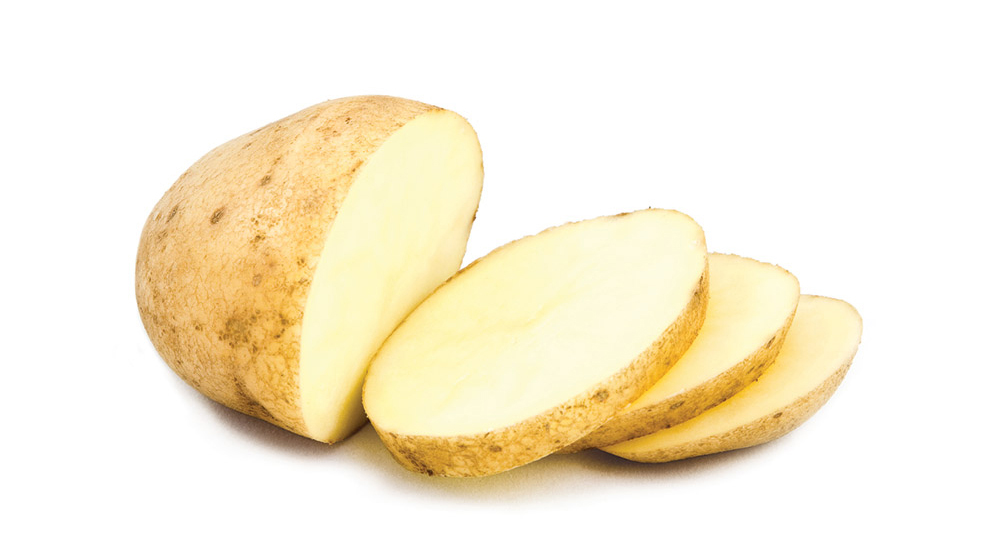
Potato, Interrupted
The hardy — if unloved — potato.
Americans love their potatoes. We enjoy them baked and mashed, and as chips and fries, to the tune of 140 pounds per person per year. Potatoes anchor our holiday meals, our summer picnics, and our fast food indulgences. They are savory perfection.
In most ways, at least.
The potato has an Achilles’ heel. Most of our commercial varieties need help standing up to pests and pathogens, including late blight, the fungal disease that caused Ireland’s potato famine in the mid-1800s.
“Every variety in this country, almost every one of them is susceptible [to late blight],” explains Jiming Jiang, a UW–Madison professor of horticulture. This includes Atlantic, Red Norland, Yukon Gold, and Russet Burbank of McDonald’s french fry fame.
To protect their crops from late blight, U.S. farmers spray around $77 million worth of fungicides each year. Even so, the disease takes a toll, causing some $210 million worth of crop losses annually. What if there was a better way? Globally, hardier potatoes could prevent thousands of tons of chemicals from being applied to the earth each year.
As it turns out, a hardier potato does exist. Back in the mid-2000s, Jiang and colleagues developed a series of potatoes that could survive late blight without sprays. But the improved plants never made it to the commercial market — they were made using genetic engineering (GE), and at that point, no GE vegetables had yet been approved. And public opinion wasn’t favorable. It still isn’t.
“You’re powerless, and you accept it,” says Jiang.
170 million
acres of genetically engineered crops are grown in the United States.
Genetically engineered foods have been part of the American diet for 20 years now, and there is strong scientific consensus that they are safe to eat. This was confirmed in a recent report on GE crops produced by the National Academies of Sciences, Engineering, and Medicine, which took into consideration nearly 900 scientific publications and other evidence and testimony on the topic.
“We found that there have been no cases of GEs causing problems for human health,” says UW–Madison biochemistry professor Richard Amasino, who served on the committee that wrote the report.
And yet, according to a 2015 Pew Research Center survey, only 37 percent of the general public feels it’s safe to eat GE foods, or genetically modified organisms (GMOs), as they’re often called. Yet eat them we do.
There are currently 10 GE crops grown commercially on 170 million acres of American farmland. The main ones are GE cotton, which we wear, and GE corn and soybeans, which we eat — in great quantities. They show up in cornmeal, cornstarch, corn syrup, dextrose, soybean oil, and many other ingredients in the processed foods we consume. And then there’s the meat we eat — the animals are largely fed on GE grains.
“For many of us, we’re eating transgenic food daily, probably with every meal,” says Irwin Goldman PhD’91, professor and chair of the UW–Madison horticulture department. “Unless you are extremely careful with ingredients, it is very difficult to avoid.”
Concerns about GEs go beyond food safety, including a general unease about possible long-term health or ecological impacts. There are also environmental issues, such as gene drift and the expansion of monoculture cropping systems, the corporate ownership of seeds, and the expansion and consolidation of farms. People’s opinions aren’t based on science alone, but incorporate political, economic, philosophical, social, and ethical factors.
And, notes Goldman, there’s just something special about food: some people feel a deep cultural or spiritual connection to their food, and genetic engineering crosses a line for them.
“As a scientist, I look at it and I think [some GE crops] are extremely innovative, providing creative solutions to complex problems. … I have no problem with them at all,” says Goldman. “But at the same time, I’m sensitive to those arguments that people make about what they want to eat and what they don’t.”
9 spuds
Jiming Jiang has been involved in developing nine non-GE varieties of potato at the UW: Millennium Russet, MegaChip, Villetta Rose, White Pearl, Freedom Russet, Red Companion, Red Pearl, Tundra, and W1386.
Potato farmers had some tough years in the early 1990s, with climatic conditions just right for late blight: a wet spring followed by a cool summer. And then 1994 hit.
That year, the late blight pathogen, or Phytophthora infestans, mutated, becoming even more virulent. The existing fungicides didn’t work against the new strain, no matter how much of them farmers applied. Potato fields across the northeast United States were decimated, including the potato test plots at the UW’s Hancock Agricultural Research Station.
“The potato industry was caught by surprise because they never had such an issue. They were worried that it was going to wipe out the whole industry,” says Jiang, who was hired in 1995 to help develop a solution.
Jiang teamed up with John Helgeson PhD’64, who was a UW professor of plant pathology at the time, to explore the one silver lining to the devastation at Hancock station: a wild potato plant from Mexico had survived in the test plot, suggesting that somewhere in its genome it possessed a resistance gene to the late blight pathogen.
Jiang and Helgeson immediately started trying to “cross” the resistant plant with popular commercial varieties, pollinating one with the other. But the Mexican plant proved to be a little bit too wild. “You cannot make it cross. It’s not possible,” explains Jiang.
At the same time, the two researchers started looking for the gene responsible for the resistance. They finally found it in 2003, named it RB, and used genetic engineering to put it into a cultivated potato.
“The potato has a very high level of resistance. You still see some little symptom here or there, but it’s going to keep greening and you really don’t have to spray,” says Jiang.
Jiang and Helgeson published their findings in 2003 and later inserted the RB gene into other popular commercial potato varieties using agrobacterium-mediated transformation, the most popular genetic engineering technique of the time.
The technique capitalizes on a type of bacteria that infects the roots of plants and inserts its own DNA into the plant’s genome. Scientists figured out how to piggyback on this functionality to insert desired genes into a plant’s genome at random locations. Then, as the plants grow, the researchers look for healthy ones that also express the new gene.
Gene drift,
or gene flow, is the unintended transfer of a gene from one species to another.
Scientists started developing GE technology for plants in the 1980s, and the first commercial genetically engineered crop — the Flavr Savr tomato — showed up in grocery stores in 1994. The product didn’t last long, as consumers found the tomatoes didn’t have much flavor to savor. Over the next couple of years, the first varieties of genetically engineered corn and soybeans were released.
These crops — and others — tend to feature one or both of two traits that are popular with farmers. Genetically engineered crops with the Roundup-Ready trait, a herbicide resistance gene, allow farmers to spray fields of corn, soybeans, and cotton with the weed killer glyphosate, a.k.a. Roundup, to keep weeds down without harming the crops. The Bt trait, however, helps to reduce the need for spraying. When crops have that trait, which produces an insecticide, pests die when they start eating the plant — no sprays needed.
“The seed companies make transgenic versions of their best varieties, and so farmers are buying them. Farmers really like the technology,” notes Goldman.
By the time Jiang and Helgeson’s late blight–resistant GE potatoes were ready, however, the crisis had passed. First, the weather changed, and then the chemical industry caught up with new, more powerful fungicides. Farmers also had more sophisticated disease management systems in place. All of this enabled them to stick to their tried-and-true varieties — spraying their crops, as needed.
“The situation was not desperate enough. That’s what I believe,” says Jiang. “If things had kept getting worse, I think the growers would have considered embracing [the GE potato].”
Jiang and Helgeson also managed — using some laboratory techniques — to fuse the cells of the wild potato with those of conventional varieties, and then used traditional plant breeding from that point on. It took 10 years, but they managed to produce a number of conventionally bred, late blight–resistant potato varieties as well.
But industry wasn’t interested. For Jiang, it was a second blow, though he took some comfort in the fact that he and Helgeson weren’t the only potato breeders to have tried and failed.
Russet Burbank, the nation’s most popular variety, has been in production since the early 1900s. It accounts for almost half of the potatoes grown in the country. Its many positive characteristics — including its shape and size, good flavor profile, and long storage life — make it McDonald’s top tuber. Plant breeders just can’t seem to beat it.
“The potato in many ways is like a wine grape. You have a variety, a cabernet or whatever, it’s like 400 or 500 years old. [Vintners] don’t want to change that,” explains Jiang. “The potato … is like this. Burbank, it’s a terrible variety [in some ways]. It’s susceptible to every disease. However, McDonald’s wants [Burbank].”
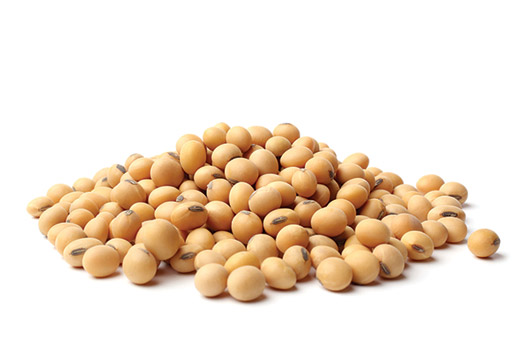
The first GE soybeans were introduced to the U.S. market in 1994. More than 80 percent of soy cropland uses GE varieties.
We can expect a deluge of new genetically engineered products in the coming years with the growth of new techniques, particularly the cheap, easy gene-editing approach called CRISPR. (See sidebar below.) The potential seems nearly limitless, and many plants will have traits that consumers value: more healthful vegetables with more phytonutrients; crops that don’t turn brown as fast after they have been cut, reducing waste; crops that fix their own nitrogen, so they don’t require much fertilizer.
“We certainly have the capability to drastically alter genomes. At this point, we’re only limited by our understanding of plant biology, how things work inside plants,” says Amasino.
Genetic engineering can even save crops from extinction. Before the GE Rainbow papaya, for instance, Hawaii’s papaya industry was on track to be wiped out by papaya ringspot virus, a viral disease spread by aphids. A similar problem is unfolding in Florida right now, where citrus greening disease is destroying the state’s orange groves. GE appears to be the only recourse. But there are also challenges associated with genetically engineered crops. The Roundup-Ready trait may be contributing to the phenomenon of Roundup-resistant “super weeds.” Gene drift has been documented, so farmers need to take precautions to avoid contaminating nearby fields of conventional and organic crops.
In this evolving environment, groups are moving forward with GE crop development. The small seed company Simplot, for one, believes that the time has come for the GE potato.
Simplot, headquartered in Boise, Idaho, has developed GE potatoes that utilize the gene that Jiang and Helgeson discovered. These potatoes — known as second-generation Innate potatoes — could help farmers reduce fungicide applications to control late blight by 25 to 45 percent annually, according to academics consulted by the company. Based on these estimates, Simplot calculates that if all Russet Burbank potatoes in the U.S. contained this gene, farmers could cut the equivalent of one fungicide application over 495,000 acres.
In a separate project, scientists at the International Potato Center, a nonprofit research organization, are developing genetically engineered versions of popular local potato varieties that contain the UW–developed gene for Uganda and other African nations. The goal is to help the bottom line of smallholder farmers in the area, who spend the equivalent of 10 to 25 percent of their crop revenue on sprays.
Jiang hopes that these late blight–resistant potatoes — along with other GE crops — will find a way to succeed.
“We’ve all been doing the same thing for 125 years. You’ve exhausted your options; you’ve crossed everything with everything,” he says. “If we want to work on nutritional value, flavor, tuber quality — those are very tricky, complicated traits. For these, we’re going to need to rely on more precisely manipulating specific genes, rather than just going and blindly doing crosses.”
Ultimately, consumers will decide the fate of Jiang’s potatoes and all other genetically engineered crops.
“We’re in a capitalist system,” notes Amasino. “The public is going to have to want it.”
Nicole Miller MS’06 received her degree in life sciences communication. She serves as news manager for the UW’s College of Agricultural and Life Sciences.
Published in the Winter 2016 issue
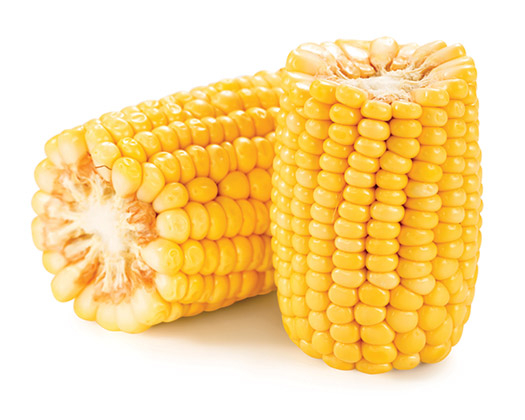
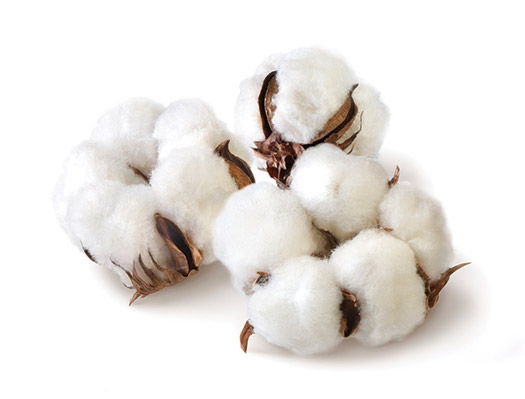
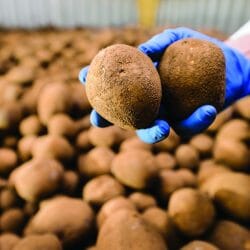


Comments
No comments posted yet.